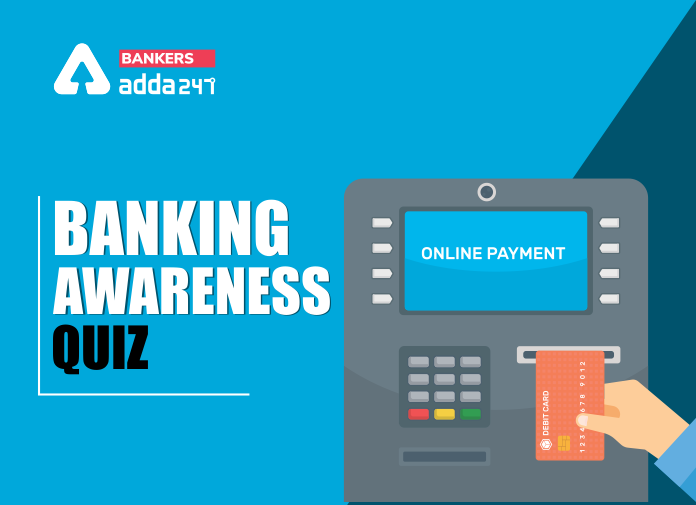Table of Contents
Q1. Who regulates monetary policy in India?
(a) Finance Minister
(b) SEBI
(c) RBI
(d) BSE
(e) None of these
Q2. RBI performs the function of financial supervision under the guidance of?
(a)Board for Financial Supervision (BFS)
(b)Internal Debt Management Department
(c) Monetary Policy Department
(d) Financial Stability Unit
(e) None of these
Q3. Which Commission recommended the formation of Reserve Bank of India (RBI)?
(a) Y Reddy Committee
(b) Swaminathan Committee
(c) Rangrajan Committee
(d) Hilton Young Commission
(e) None of these
Q4. The interest rate at which the Reserve Bank provides overnight liquidity to banks against the collateral under the liquidity adjustment facility (LAF) is known as _____.
(a)Bank Rate
(b)Reverse Repo rate
(c)Repo rate
(d)Market Stabilization Scheme
(e)None of these
Q5. Which of the following words is not used in Monetary Policy?
(a) Cash reserve ratio
(b) Blue chip
(c) Bank rate
(d) Repo Rate
(e)None of these
Q6. Which of the following is not a function of RBI?
(a)Banker to the government
(b)Managing monetary policy
(c)Managing foreign exchange
(d)Issuer of currency
(e)None of these
Q7. Which of the following is not a function of RBI?
(a)Regulating and supervising the financial system
(b)Regulating and controlling the business on stock markets
(c)Issuing currency
(d)Custodian of Country’s Foreign Currency Reserves
(e)Lender of Last Resort
Q8. Which bank is the banker to the Central Government?
(a)Reserve Bank of India
(b)SIDBI
(c)Punjab National Bank
(d)State Bank of India
(e)None of these
Q9. The main work of Reserve Bank of India is to regulate, control and decide:
(a)Policies for banks and financial institutions
(b)Wholesale and Retail price of consumables
(c)Foreign investments in Indian firms/businesses
(d)Reserves for securing monetary stability in country
(e)None of these
Q10. RBI has the sole right to issue currency notes of various denominations except one-rupee notes. Under which of the following Acts is the RBI entitled to issue currency notes?
(a)Banking Regulation Act
(b)Companies Act
(c)Negotiable Instrument Act
(d)Reserve Bank of India Act
(e)None of these
Practice More Questions of Banking Awareness for Competitive Exams:
Banking Awareness for Competitive Exams |
Banking Awareness Quiz for Bank Exams 2021- 5th May |
Banking Awareness Quiz for Bank Exams 2021- 4th May |
Banking Awareness Quiz for Bank Exams 2021- 3rd May |
Solutions
S1.Ans.(c)
Sol. RBI regulates monetary policy in India.
S2.Ans.(a)
Sol. RBI performs the function of financial supervision under the guidance of Board for Financial Supervision (BFS).
S3.Ans.(d)
Sol. The Reserve Bank of India was set up on the basis of the recommendations of the Hilton Young Commission. The Reserve Bank of India Act, 1934 (II of 1934) provides the statutory basis of the functioning of the Bank, which commenced operations on April 1, 1935.
S4.Ans.(c)
Sol. The (fixed) interest rate at which the Reserve Bank provides overnight liquidity to banks against the collateral of government and other approved securities under the liquidity adjustment facility (LAF) is Repo Rate.
S5.Ans.(b)
Sol. The word Blue chip is not used in Monetary Policy.
S6.Ans.(e)
Sol. All of the above are functions of RBI.
S7.Ans.(b)
Sol. Regulating and controlling the business on stock markets is the major function of Securities and Exchange Board of India (SEBI).
S8.Ans.(a)
Sol. Reserve Bank of India acts as a banker to both Central and State Governments.
S9.Ans.(d)
Sol. Reserve bank of India is banker to banks and banker to government whose main work is to regulate issue of Bank Notes and keep reserves to safeguard monetary stability in the country.
S10.Ans.(d)
Sol. Under Section 22 of the Reserve Bank of India Act, RBI has sole right to issue currency notes of various denominations except one rupee notes. The One Rupee note is issued by Ministry of Finance and it bears the signatures of Finance Secretary, while other notes bear the signature of Governor RBI.





 GA Capsule for SBI Clerk Mains 2025, Dow...
GA Capsule for SBI Clerk Mains 2025, Dow...
 The Hindu Review October 2022: Download ...
The Hindu Review October 2022: Download ...
 SBI Clerk Prelims Result 2025 Out, Direc...
SBI Clerk Prelims Result 2025 Out, Direc...







